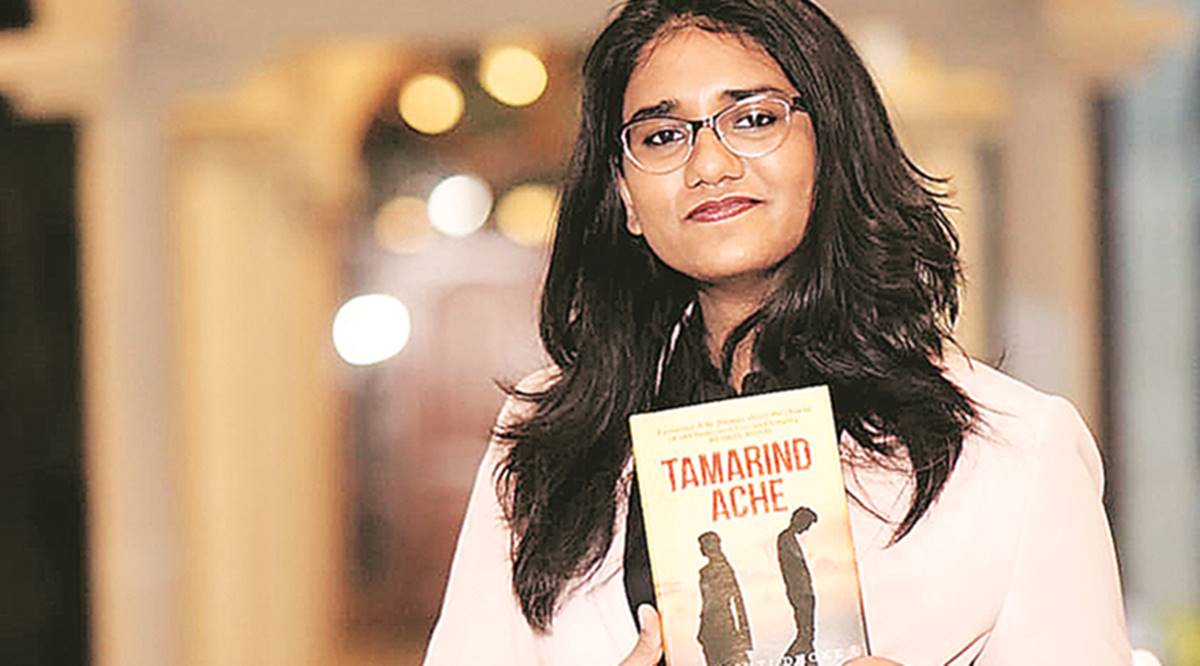
She has not been able to meet Ruskin Bond yet, but 18-year-old Srushti Dhoke says it was a dream-come-true to have the legendary author write a foreword for her debut novel, Tamarind Ache (Rupa Publications; Rs 299). The book, which was recently launched in Nagpur and Chandigarh, is a fictionalised accounts of the tales told by her grandparents when she would visit them during vacations at their small village in Maharashtra. Daughter of a senior cop based in Chandigarh, Dhoke is currently a freshman at Boston University, Massachusetts, US, studying economics and mathematics. Excerpts of an interview:
You were contributing articles to newspapers earlier, so what prompted you to write a book?
My grandparents live in a village in Maharashtra. My family and I try to visit them at least once every year, so the rural setting has always been a part of my life. However, I was brought up in towns and cities, and I realised that city folk mostly think of villagers in terms of the issues that they face, and fail to see other aspects. The rural stories that my grandparents and parents have told me, along with my research, made me feel that rural life in Maharashtra needed to be documented in the way that the people living it see it. My journey with writing was greatly encouraged by my family, specially my father.
How does writing effect your studies? Or are these two completely in separate compartments?
I wrote the book when I was still in school. I would only write during holidays and vacations, so my studies weren’t affected a great deal. When I write, I have to get into a space in my mind wherein there is no room to focus on anything else, then it’s just my story and I. So I would say writing and studies have been in different compartments right from the beginning.
Is the story inspired by some people you know? Does it have any personal elements?
Tamarind Ache is not a real story, but it very well could be. It is an amalgamation of the stories my grandparents have told me about the village they live in, stories out of their own lives and stories about other people around them. My parents too have told me stories out of their own childhoods and the circumstances that they had to face to get to where they are now. These stories have been key inspiring factors.
Are you planning another book already or you want to carry on writing for newspapers like before?
I haven’t quite made up my mind yet. Even when I started writing Tamarind Ache, I didn’t know if it was going to turn into anything at all, let alone a book. There are definitely more books to come, and definitely more newspaper articles too, but I can’t say which will come first
or when.
What is the book all about? How long has it been in the making?
Though it is a story of unrequited love, the idea behind it is to depict what life in rural Maharashtra is like. The focus of the story is a father-son duo, Shiva and Raghu. Shiva’s past causes trouble between the two, and finally ends up catching up with Shiva. Tamarind Ache took me over three years to write.
Sitting in the US, how do you view India as a youngster?
Initially, the articles I wrote were about things that I came across in everyday life; my first one was on a childhood photograph, and another was derived from a conversation over dinner. As I started focusing on the social aspect of my grandparents’ and parents’ stories, my mind shifted to more serious writing. India is the fastest growing major economy in the world, and people have very high hopes for its future. However, this book has opened my eyes to issues like the government’s neglect towards suffering farmers and the sorry conditions in some village schools.